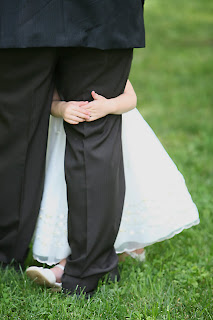 The yummy and beautifully-designed wedding cakes that you see at each wedding today have been part of the celebration of marriage since the Roman Empire. (The Roman Empire dated between 502 BC to 29 BC.) The first wedding cakes were made of thin wheat or barley (waffer-like). The groom would eat a little bit of this cake and then crumble some over the bride's head to ensure fertility. The breaking of the cake over the bride's head was also seen as the groom's dominance over the bride.
The yummy and beautifully-designed wedding cakes that you see at each wedding today have been part of the celebration of marriage since the Roman Empire. (The Roman Empire dated between 502 BC to 29 BC.) The first wedding cakes were made of thin wheat or barley (waffer-like). The groom would eat a little bit of this cake and then crumble some over the bride's head to ensure fertility. The breaking of the cake over the bride's head was also seen as the groom's dominance over the bride. As wedding cakes evolved through history, they became larger and larger and more elaborate--way too big and messy to crumble over the bride's head. There may have been some very small cases of this tradition still existing in Scotland during the 19th century, when oatcakes were broken over the bride's head.
In medieval England there were reports of flour-based cakes without sweetners being used at weddings. Sometimes these "cakes" were just a pile of sweetened buns stacked up in front of the couple. The couple would then stretch to kiss over them. If they were successful, then it was thought they would have many children.
 During the 17th century and continuing into the 19th century, the "cake" could have been actually a pie--called the bride's pie. The main ingredient in this sweet, minced or mutton pie was a ring. It was believed that the single woman who found the glass ring in the pie would be married next. These pies were seen more in the less affluented weddings.
During the 17th century and continuing into the 19th century, the "cake" could have been actually a pie--called the bride's pie. The main ingredient in this sweet, minced or mutton pie was a ring. It was believed that the single woman who found the glass ring in the pie would be married next. These pies were seen more in the less affluented weddings.Also, during the 17th century, some traditions thought it was good luck to give cake as gifts to the guests. The cake given to unmarried people was to be put under their pillows. This would give them dreams about their future spouses. Later on in the 18th century cake giving was expanded. This time the cake was pushed through the wedding couples' rings. The crumbs of the cake were distributed to the guests to put under their pillows. This particular tradition stopped when brides became superstitious about taking off their rings after the ceremony and possibly breaking the "bond" the ring represented.
Read more about the tradition of wedding cakes in our next blog, beginning with the Victorian Age and continuing to modern day, like the modern-day cake photos on this blog. These cakes were baked and decorated by http://www.acaketoremember.com/ and http://www.cakesbygraham.com/, respectively.
Also for more photos and portraits, visit our website at http://www.miller-photo.com/. We are on Facebook, too, at http://www.facebook.com/pages/Richmond-VA/Miller-Photography-Inc/172936215623














